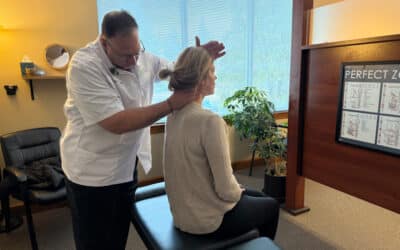Managing Pain & Chiropractic Adjustments
Managing pain is the key to a better pain less life. There is a large problem with pain sufferers in the US, with some 116 million adults out of an adult population of 238 million experiencing pain in some regard. The top 4 areas of chronic pain are as follows:
- Lower Back Pain – 28.1%
- Knee Pain – 19.5%
- Severe Headaches – 16.1%
- Neck Pain – 15.1%
Back and neck pain account for 43% of those figures, meaning that treatment for those areas has become something of a specialist area for chiropractors, however this still comes with many difficulties. Chronic spinal pain is a challenge for doctors. An article by Chiro Trust.org states that:
Treating chronic spinal pain has always been a challenge for health care providers. An advance in the battle was achieved in 1973. Candace Beebe Pert (June 26, 1946 – September 12, 2013) was an American neuroscientist and pharmacologist who discovered the opiate receptor, the cellular binding site for endorphins in the brain (17). In 1974 Candace Pert earned a Ph.D. in pharmacology from Johns Hopkins University School of Medicine, where she worked in the laboratory of Solomon Snyder and discovered the brain’s opiate receptor. Pert’s and Snyder’s discovery of the opiate receptor drastically changed the approach to the management of chronic pain sufferers.
However, in 1977, researchers discovered the opiate receptors in the upper brain stem were responsible for controlling pain throughout the body. This led to further research and tests on a series of 6 cancer subjects who had electrodes permanently implanted in this area by neurosurgeons. The patients were given a controller of which they could activate and were thus able to enjoy long periods of pain relief. Managing pain was about to make large strides.
Although the test was on a small group, doctors theorized that perhaps a placebo affect was occurring. To test this, they deliberately inserted dead batteries into one of the test subject’s controller, and observed that the pain did not go away when they tried to activate it. Replacing the battery with a new one, and the subject once again experienced relief.
However, while this treatment was successful in managing pain, there are large drawbacks to it, the biggest being its intrusive nature.
Opioid pharmacology has thus become the most popular way of pain management since this discovery. Millions have experienced good levels of pain management over the years through this mode of control. But again, there are big problems with this. Side effects, addiction, and that the risks of long term use might not necessarily outweigh the benefits.
The Chiro Trust.org article states that:
“Doctors so frequently prescribe the drugs known as opioids for chronic pain from conditions like arthritis, migraines and lower back injuries that there are enough pills prescribed every year to keep every American adult medicated around the clock for a month.”
“Now 4 of 5 [80%] heroin addicts say they came to the drug from prescription painkillers.”“The American Academy of Neurology last year concluded that the risks of long-term opioid treatment for headaches and chronic low-back pain likely outweigh the benefits.”
- The November/December issue of the RandReview published an article titled Opioid Rising, which notes:
Heroin kills more than 8,000 Americans yearly, but opioid prescription painkillers kill more double that number.
“The Centers for Disease Control and Prevention now considers opioid drug abuse to be a full-fledged epidemic.”
- Recent publications indicate that 78 Americans die daily from opioid painkillers overdoses.
Clearly, opioids do not form a long lasting solution to dealing with managing pain.
However, chiropractic care is therefore one potential solution. Once again, our Chiro Trust.org article presents a very good case:
The spine is a very complex system. As a profession, chiropractic has many specializations, including some who specialize in biomechanical problems of the neck, and others that specialize in biomechanical problems of the low back. An interesting anecdote is the clinical observation of spinal manipulation in one region of the body alleviating pain in a different, untreated region of the body; this can pertain to other spinal regions, extremities, head, etc. It is for this reason that many chiropractors adjust (specific manipulation) only proven biomechanical lesions, regardless of the patient’s pain presentation.
This approach to treating the spine (treat the biomechanical problem v. the place of pain) is not new. Reference texts have for decades noted that the spine is a single functioning unit; this means that necks and back are functionally integrated, and vise versa.
The activation of the opiate receptors would thus be the key to pain management.

Dr. David Warwick, DC, is a board-certified chiropractor with over two decades of experience helping people find fast, effective relief from back and neck pain. He is the only chiropractor in Lacey, WA certified in the Zone Technique — a specialized healing method that restores balance to the body’s six systems for long-term wellness.
At Warwick Chiropractic & Massage, Dr. Warwick focuses on short-term, results-driven care, helping patients return to life without unnecessary long-term treatment plans. His clinic welcomes walk-ins and offers convenient online scheduling for modern, flexible chiropractic care.
Dr. Warwick is committed to educating his patients and the public about natural pain relief, spinal health, and how chiropractic care can be both simple and life-changing.







